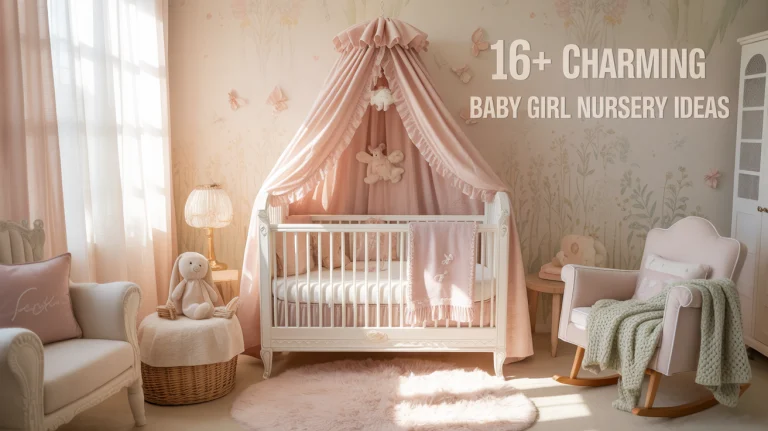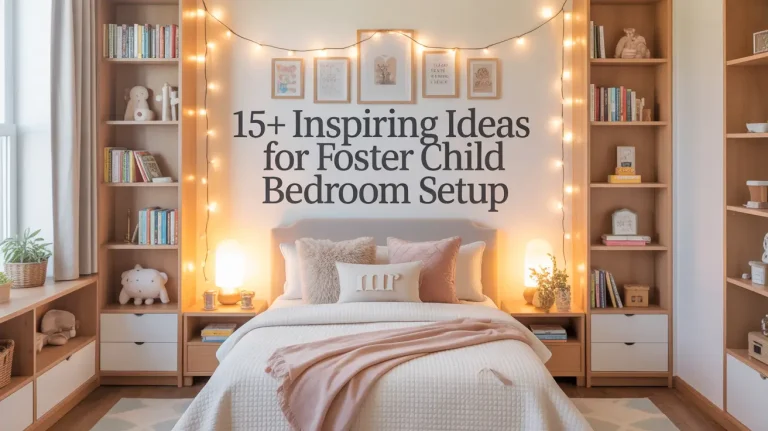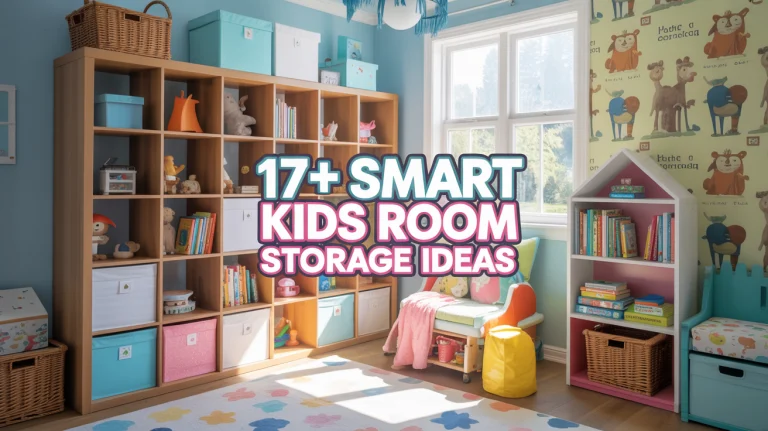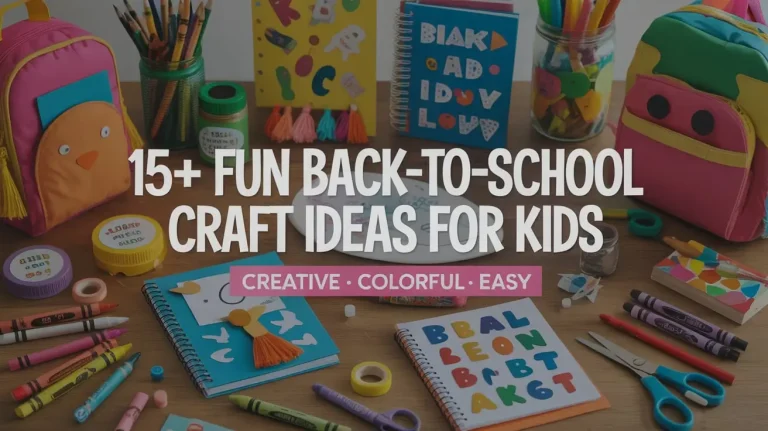19+ Fun Bedroom Ideas for 3-Year-Old Boys
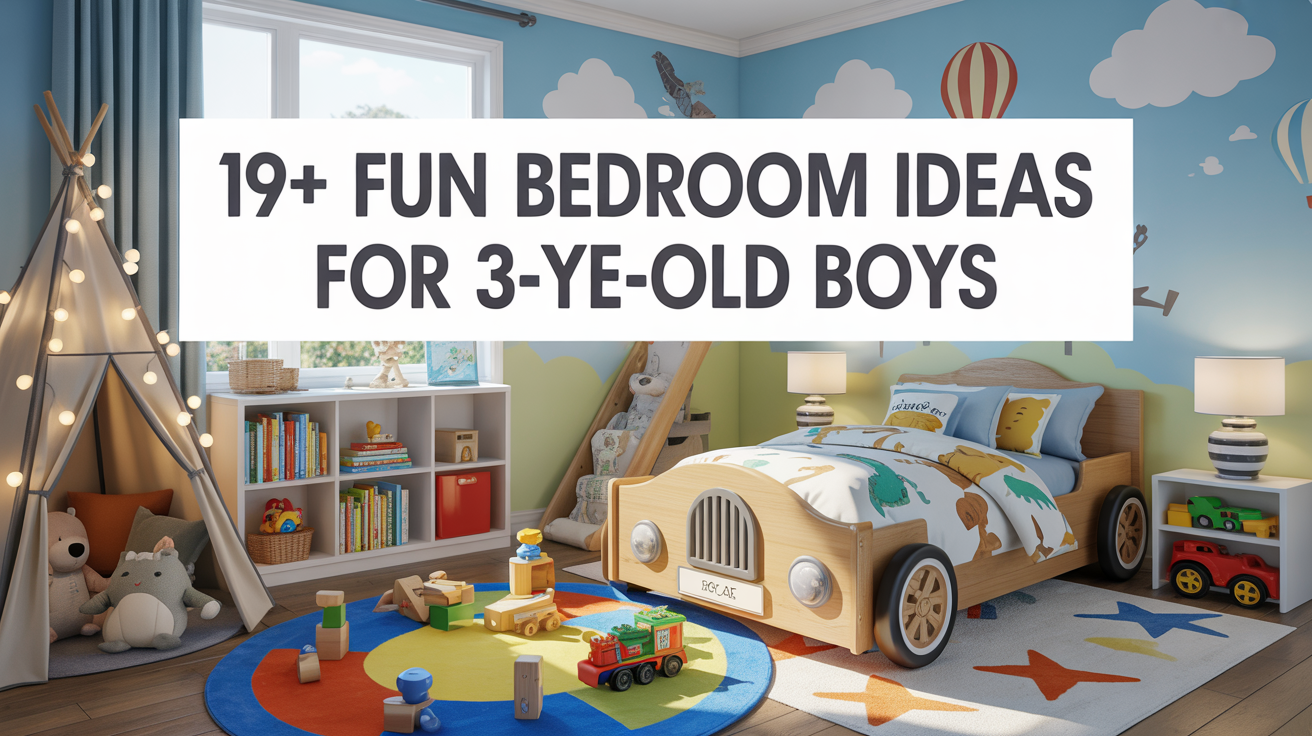
Creating a bedroom for a 3-year-old boy is more than decorating a space—it’s about building a world that helps him grow, play, and rest all in one place. At this age, a child starts to show clear preferences for colors, toys, and favorite characters. A well-thought-out room blends fun with function. It sparks creativity, feels safe, and gives him space to play freely. With the right touches, even a small room can turn into a magical place filled with joy. Below are 19+ expert-level ideas that have been tested and loved by both kids and parents over the past two decades.
1. Make the Bed the Star of the Room

The bed is where the day starts and ends, so it should feel exciting and cozy. A race car bed or a small tent bed can make bedtime fun instead of a struggle. Add soft, breathable bedding with his favorite cartoon characters or animals. Keep the mattress low to the ground for safety, especially if he’s still learning to sleep without rails. Make sure he can climb in and out on his own—it builds confidence.
2. Use Wall Art That Grows With Him

Young kids are constantly changing. What they love today might fade tomorrow. Instead of painting murals that are hard to change, go for removable wall decals or framed prints. Pick shapes, animals, or vehicles that reflect his interests. These can be updated over time as his tastes evolve. You can even let him help choose them. It gives him ownership over the space and makes the room feel like his own.
3. Choose Calming Colors With a Pop of Fun

Colors affect mood. While bright colors are exciting, too many can feel chaotic. Start with soft base tones like light blue, soft gray, or creamy white. Then, add pops of brighter colors through accessories like pillows, rugs, and lamps. This balance keeps the room playful but peaceful. If he loves a color like red or green, use it in small doses so it doesn’t overwhelm the room.
4. Add Toy Storage That’s Easy to Use

A three-year-old plays hard—and that means lots of toys. Keeping the room neat starts with smart storage. Use open bins, low shelves, or baskets that he can reach by himself. Avoid heavy lids or sharp corners. Label the bins with pictures, so he knows what goes where. This teaches him to tidy up without help and builds good habits early on.
5. Build a Small Reading Corner

Even if he can’t read yet, a cozy reading spot invites quiet time. Add a child-sized chair or floor cushion with a small bookshelf nearby. Keep books visible so he feels drawn to them. Rotate books every week to keep things fresh. Soft lighting, like a warm lamp or string lights, adds to the cozy feel. Over time, this simple setup can help develop a love for stories and learning.
6. Create Space to Move and Play

A three-year-old has lots of energy. Make sure the bedroom allows room to move, even if it’s small. Keep floor space open for things like toy trains, blocks, or dancing. Use a rug that’s soft and durable for both play and safety. If there’s room, a small climbing structure or slide can make the space even more fun. Just make sure everything is safe and anchored.
7. Add Personal Touches That Matter

A bedroom feels special when it includes things made just for him. Hang up artwork he created or add his name in wooden letters above the bed. Display favorite toys on a shelf—not just to store them, but to celebrate them. Personal touches show that this room was built around him, not just for him.
8. Keep Lighting Soft but Flexible

Bright lights can feel too harsh, especially at bedtime. Use layered lighting: a main ceiling light, a small bedside lamp, and maybe a nightlight. Let him help turn the lights on and off—it gives him a sense of control. For bedtime, a dim nightlight in a fun shape can feel comforting. Motion-activated lights near the floor also help for nighttime bathroom trips.
9. Use Furniture That Fits His Size

At this age, scale matters. Child-sized tables, chairs, and storage units help him feel independent. He should be able to sit, stand, and reach things without needing help. Avoid high furniture that could tip over. If you use taller shelves, make sure they’re securely anchored to the wall. A small table can be used for drawing, puzzles, or snack time.
10. Add a Touch of Adventure

Three-year-olds love imagination. A tent, canopy, or pretend camping area adds adventure to a plain room. Use fabric or soft materials so it feels inviting. Even a sheet draped over two chairs can feel like a secret fort. Change the setup every few weeks to keep it exciting. This kind of flexible space encourages creative play and storytelling.
11. Keep Floors Comfortable and Safe

Three-year-olds often sit and play on the floor, so flooring needs to feel soft and safe. Use a cushioned area rug over hardwood or tile. Make sure it doesn’t slide around—use a rug pad underneath. Choose a design that hides minor messes or stains but still adds color. Rugs with roads, animals, or simple shapes also invite playtime right on the floor.
12. Display Toys as Decor

Some toys are just too cute to hide. Put favorite trucks, plush animals, or wooden blocks on floating shelves or bookcases. Rotate the display often to keep things interesting. This gives the room a playful look and also lets him enjoy his things even when he’s not using them. It keeps the room feeling alive and full of energy.
13. Make Room for Imaginative Play

Pretend play starts to take off at this age. A dress-up corner, toy kitchen, or mini garage for cars can fuel his imagination. These setups don’t need to take up much space. Tuck them into a corner or next to the closet. Use storage that doubles as play space, like a toy chest that’s also a table. Encourage him to play out little stories—it’s good for his brain and emotions.
14. Bring Nature Inside

Little boys love animals, bugs, and outdoor fun. Bring a bit of that into the room. Use nature-themed bedding with trees or animals. Add a few safe plants to teach care and responsibility. Hang up pictures of forests, dinosaurs, or jungle scenes. Nature makes the room feel calm while feeding his curiosity.
15. Design With Growth in Mind

Kids grow fast. Try to choose things that can grow with him. Beds that convert from toddler to twin, neutral wall paint, and classic furniture styles help you avoid redoing the room every year. Focus on changing the small stuff—bedding, toys, art—while keeping the big pieces steady. This approach saves time, money, and effort down the line.
16. Include a Spot Just for Drawing

Three-year-olds love to draw, even if it’s just scribbles. Give him a space where he can do it freely. A small table with paper, washable markers, and crayons is enough. Hang up his drawings on the wall like they’re masterpieces. This builds pride and encourages creativity without needing screens or gadgets.
17. Let Light In During the Day

Sunlight keeps the room cheerful and healthy. Use curtains that let in natural light while still offering privacy. Pick light fabrics and soft colors so the space doesn’t feel too dark. If the windows are small, add a mirror to bounce light around. Make sure your child can open and close the curtains safely, too.
18. Stay Away From Clutter

Less is more when it comes to a toddler’s room. Too many toys or decorations can feel overwhelming. Stick to what he uses and loves. Keep extras in storage and swap them out every few weeks. This helps keep the room calm, manageable, and easy to clean. A tidy space is easier for him to enjoy and for you to keep up.
19. Encourage Quiet Time

Even high-energy kids need moments of rest. Create a nook where he can slow down. Add a bean bag or rocking chair, soft lighting, and maybe some calming music. Teach him that it’s okay to take a break sometimes. This helps him learn how to self-soothe and handle emotions better, which is an important part of growing up.
20. Keep Safety at the Core

Fun doesn’t matter if the room isn’t safe. Cover outlets, anchor furniture, and choose non-toxic materials. Make sure cords are out of reach and that there are no small parts that could be choking hazards. Walk through the room at your child’s eye level to spot any issues. When safety is built in from the start, both you and your child can relax and enjoy the space.

